Agile on the Beach 2024: Vulnerabilities are cool
- 8 minutes read - 1536 words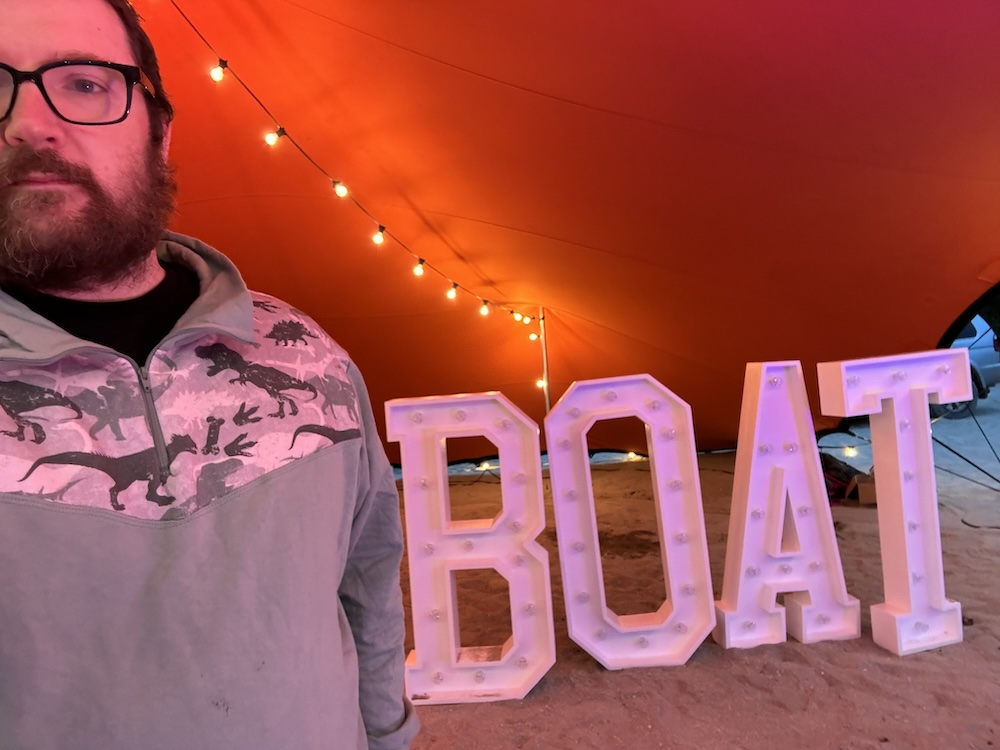
After the fantastic experience of speaking at Agile on the Beach 2023 a year before, I was back for more agile. This meant more driving: again I took the motorway barge for the long road trip from the North West to almost the tip of the South West. For international readers, when I say North West, I mean England, somewhere near Preston, and the South West is in pretty Falmouth, Kernow (Cornwall). This time round there was an added danger factor as the clutch cylinder was apparently leaky and had caused some problems a few weeks before. But as I don’t know enough about cars to be deterred, I was testing in production and took the car on the road.
After the disappointment of missing the Secret Garden Party on Wednesday night by only 15 minutes. And missing out on the pasty I’d been looking forward to for about 345 miles, I counted my blessings and worked on my slides. As it turned out, they would be finished about 5 minutes before my presentation started!
The next morning, the conference kicked off in earnest, with a fantastic keynote by Abeba who took us on a whirlwind tour of what is wrong with generative AI.
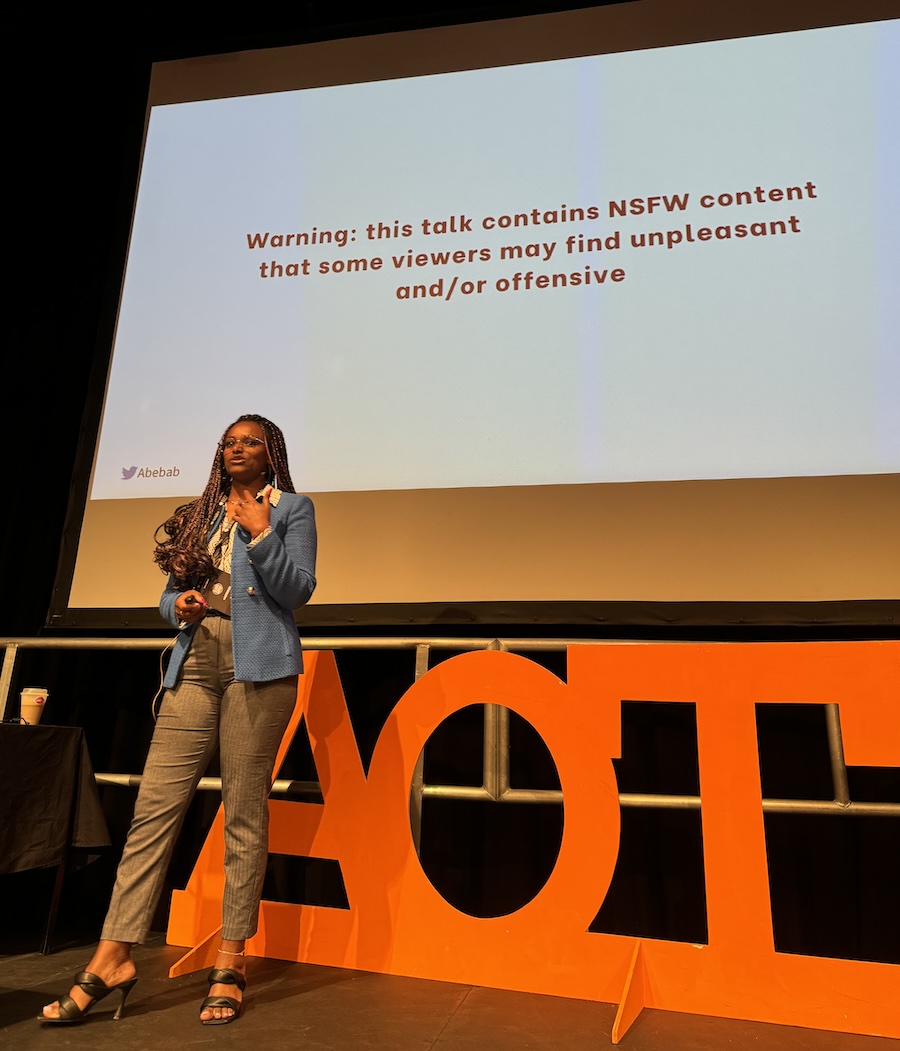
And there’s a lot wrong. Put aside the inherent biases in the models that come from training on the darkest cesspool of the internet and the hallucinated and racist outputs, there’s also the small matter of the energy usage. It makes me wonder whether the VC money that has pivoted from Blockchain to AI would ever find something that isn’t a colossal waste of energy. Climate crisis? Oh no, we can use AI to fix it… Mmmmmmm.
Later on, generative AI was also a brilliant topic of one of the lightning talks: Joep talked about Luddism and how the Luddites had the right idea smashing up the machines that changed weaving from a craft with 30-hour work weeks to something that exploits children in factories 70 hours a week.
I also got one of my new favourite stickers from him!
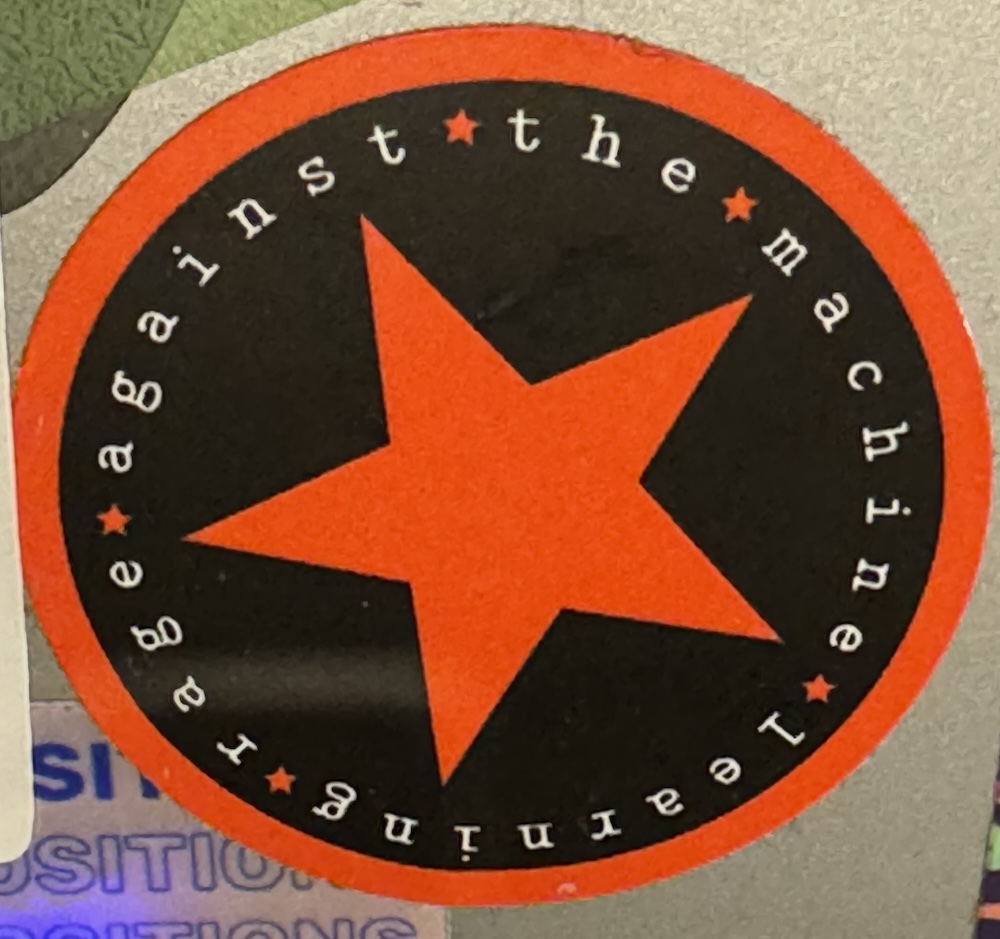
These days Luddites get a bad name of just being against technology, but we must be careful that warning against the excesses of hype in Gen AI doesn’t get people branded as being anti-progress somehow. I can see the benefit of Large Language Models (a chat about a model trained on the PubMed database at DevOpsDays Amsterdam comes to mind), but I cannot see how applying GenAI as a hammer to every problem does not lead to worse outcomes for us all. Currently, the main use seems to be the industrialisation and automation of hate, bigotry and misinformation as well as feeding a very hungry hype cycle.
So was there anything other than AI?
Yes! I’m just as relieved that normal agile topics get a look in too! One of my favourite “normal” talks was by Artur who is a really engaging and entertaining speaker. His energy metaphorically dripped off the stage and was quite infectious. I found the concept of a “you choose your own adventure” talk really quite refreshing and had a fair few lightbulb moments going off when talking about how to: kill meetings, influence people and many other nuggets of great info from his toolbox:
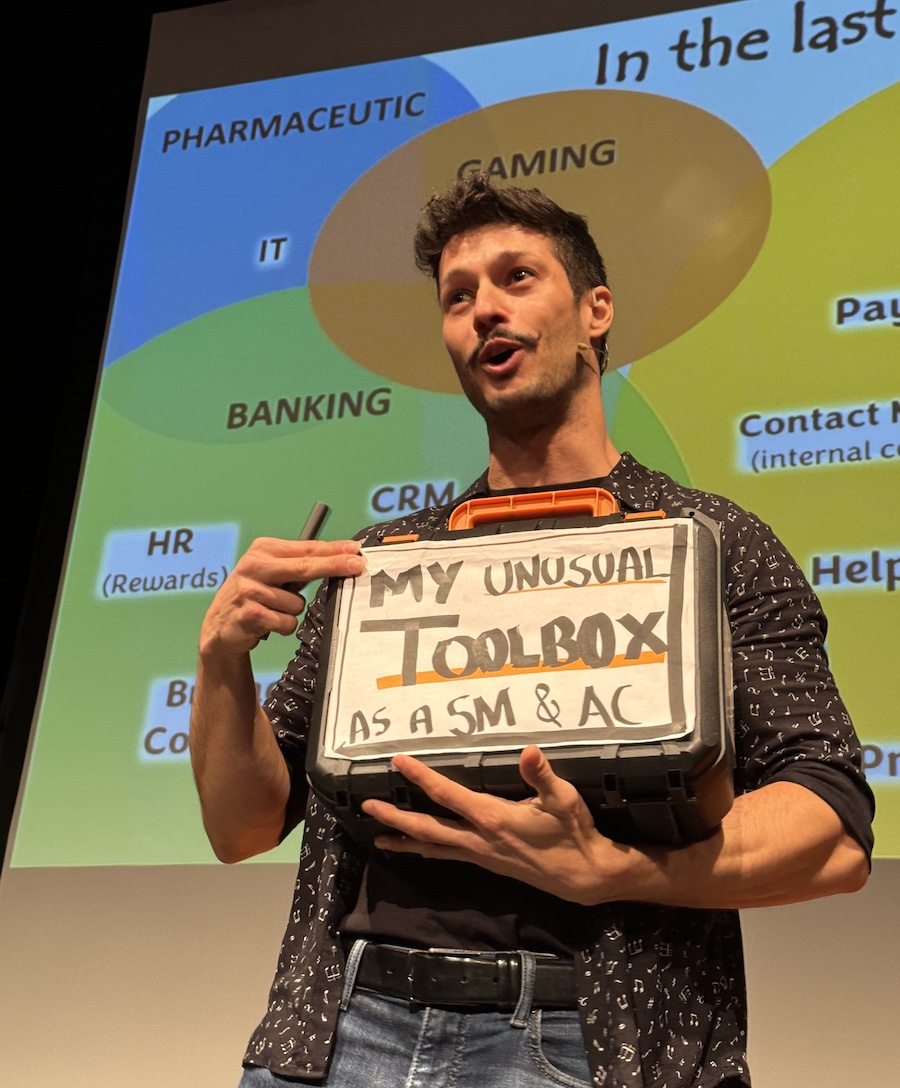
The toolbox was a great prop for his stories. And (tenuous segue to our next speaker alert!) Clare also told us on a wonderful story about Trunk-Based Development. I loved the way that she used a pattern of
- Start State
- Crisis
- End State
To tell us about why using trunk-based development is the right approach, when done right. Pull requests and branches are good in open-source projects, where there is little trust. But to use the same approach in a team where people should trust each other, is just not right. And no, regulators don’t require pull requests either!
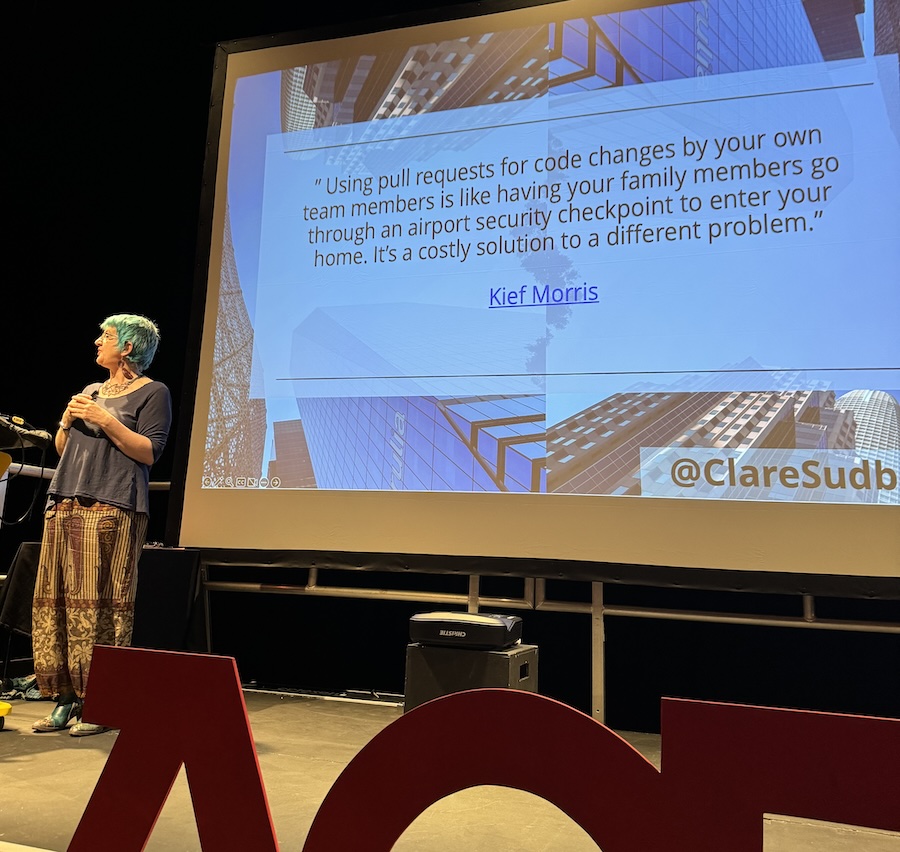
By the way, Kief was at the conference, so it was possible to go and chat to him about his quote, not that I did though, that would’ve been too easy!
Anyway, back to story telling!
I really liked Derek’s talk about failure.
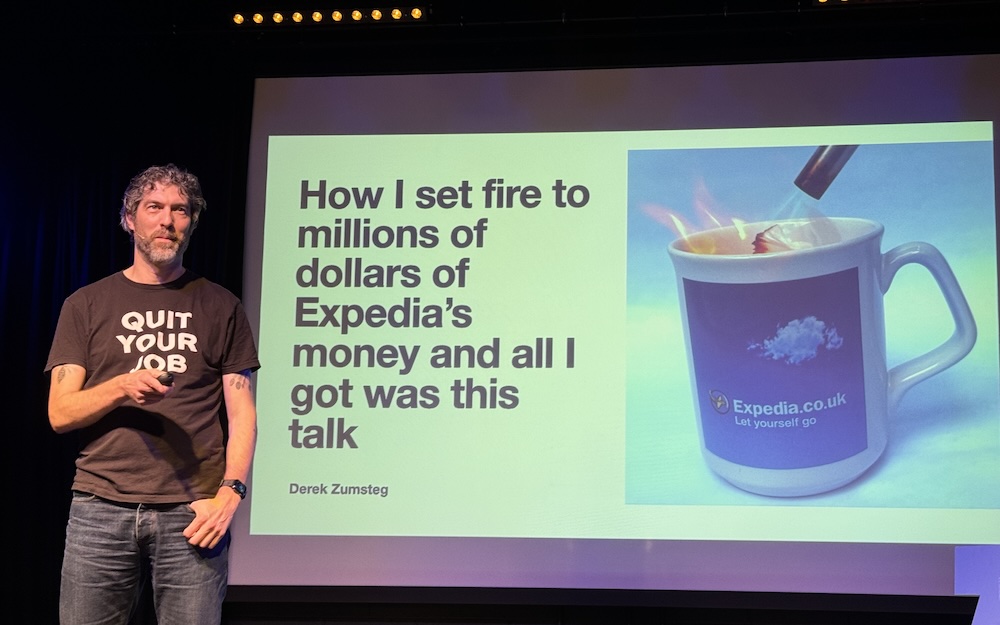
This was a really entertaining story about a project that completely failed. It achieved nothing, cost a lot of money and there were lots of chances to stop that weren’t taken. For me the fascinating thing was not that Derek wasn’t fired, but the call to normalise talking about failure. In software engineering we are too scared of NDAs to chat about what does not work. I guess in the same way that developers rather watch 2 YouTube tutorials, read 12 blogs and spend 13 hours with ChatGPT rather than asking our colleagues to help, we don’t feel great saying something didn’t work!
But how do we learn? By stuff going wrong. Blowing up in our faces. And as software engineers we’re in the lucky position that “blowing up in our faces” does normally not result in actual death. Why aren’t we talking about failure more openly?
Normalise failure? You go first…
… and I did. I finished off the lightning talks with a semi-serious rant on how I very much feel like an impostor in my new current role as head of engineering. How hard it is to make the right kind of impact, and how dealing with practices that go against agile and “disagreeing and committing” is kind of hard.
I cunningly dropped the F-bomb more often than the inimitable Gwen Diagram in the hope that this prevents the lightning talk from being put on YouTube where it could be interpreted as slagging off my current employer.
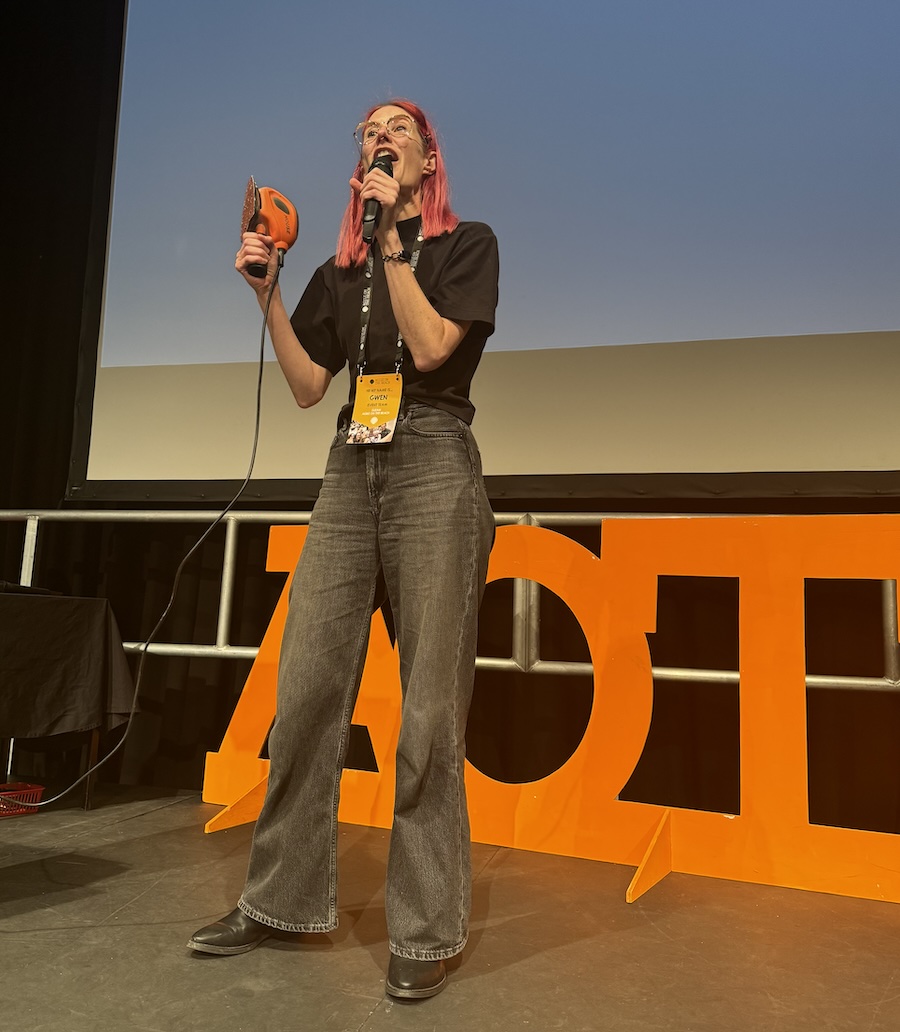
Maybe don’t put it into your blog, you idiot?
Well, the thought had occurred to me, but I do think that showing vulnerability is a great way of normalising that in the software industry - like so many things in life - things aren’t always going great, and sometimes, it just needs a really good rant, because that can actually make things better!
Vulnerabilities? Sounds like Security!
I guess I should mention that I did a talk called “AppSec Loves Agile” (based on this blogpost) and had a lot of fun. I did indeed finish my slides about 5 minutes before my talk - ok, I admit I was just adding the QR codes for speaker feedback - but I found that my relative unpreparedness gave my talk a better flow as I was just talking (and ranting!) rather than worrying about a script.
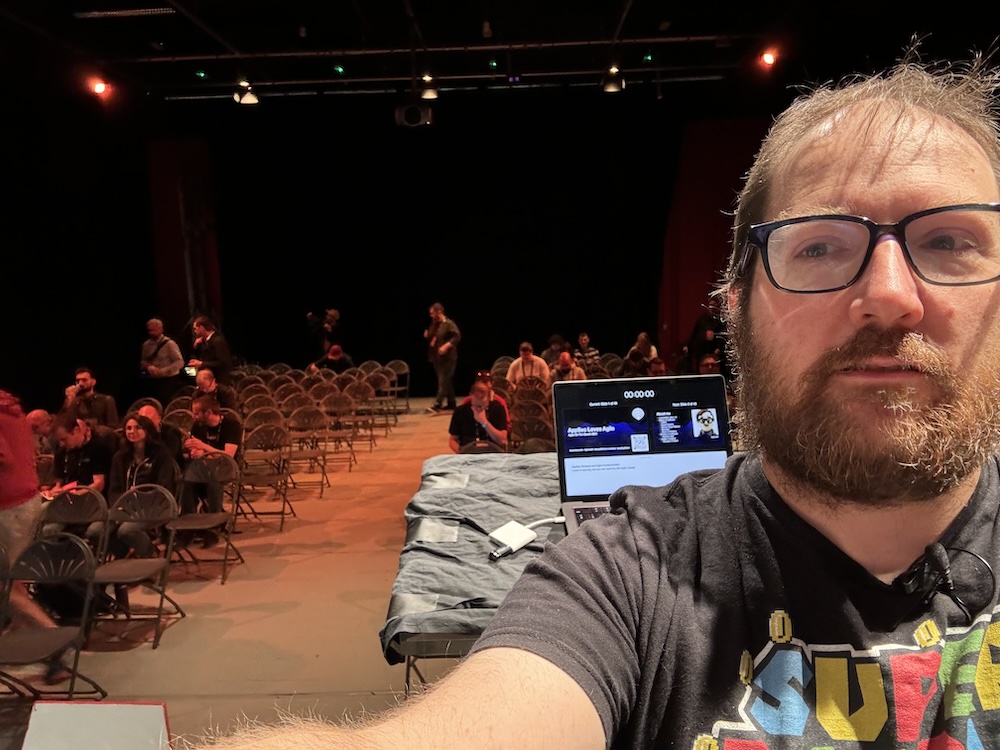
Rockstar Ranting
Talking of rants, I really liked Stephen’s warning about the possible return of rockstars. It was the closing keynote (yes, yes, I know I’m not doing chronological order which is why I mention this talk in the middle of my post), and it took an interesting view on what caused that toxic, out-for-themselves, not-taking-any-advice kind of developer to make a return.
It’s the economy, stupid
When money was flowing freely, it was hard to find developers, so “rockstars” just got away with it. Now that money is getting tighter, the “gets things done quickly” persona might be the last one that people want to get rid of.
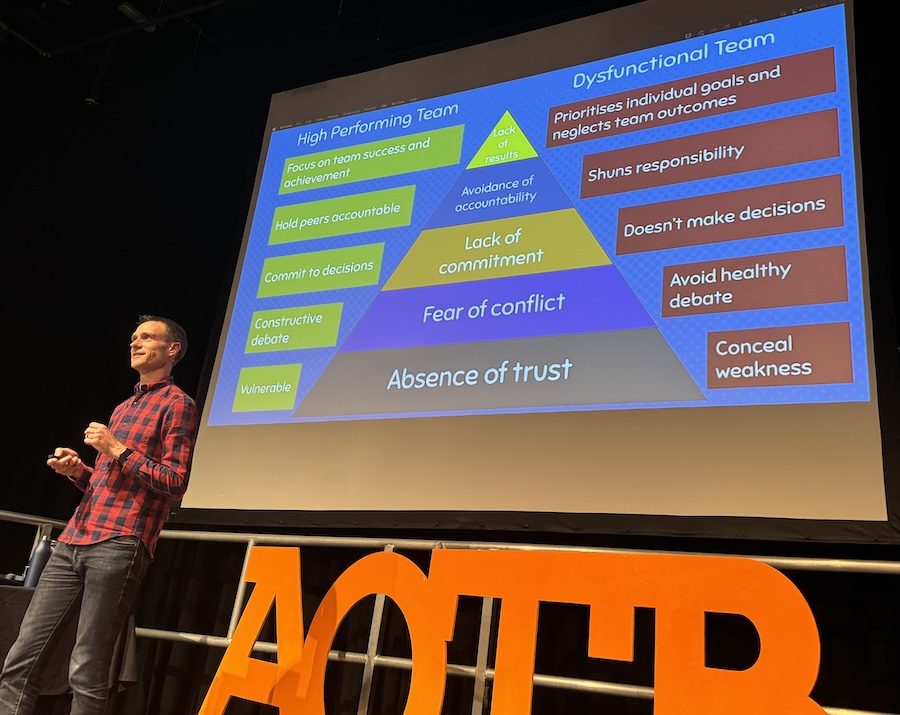
I can’t help thinking that ChatGPT, Copilot and Codellama are the biggest rockstar developers at the moment!
So all doom and gloom?
No, definitely not.
I loved Janet’s keynote about the Product Operating Model. I never knew that pretty much all of the big tech enterprises had one thing in common, and that was Bill Campbell, who influenced pretty much all of them. The idea of the product operating model is simple:
- A product vision is at the centre - this isn’t a flighty mission statement or a fancy tag line, this should be a story that is central to a company and defines the next 3-10 years.
- A product strategy is about focussing on 2-4 problems to solve that can help to drive the company toward the vision in the next 18 months-5 years
- Product metrics allows a company to measure itself on how well it is executing the strategy and
- Features and Solutions should be rapidly iterated - no roadmaps or long project plans needed.
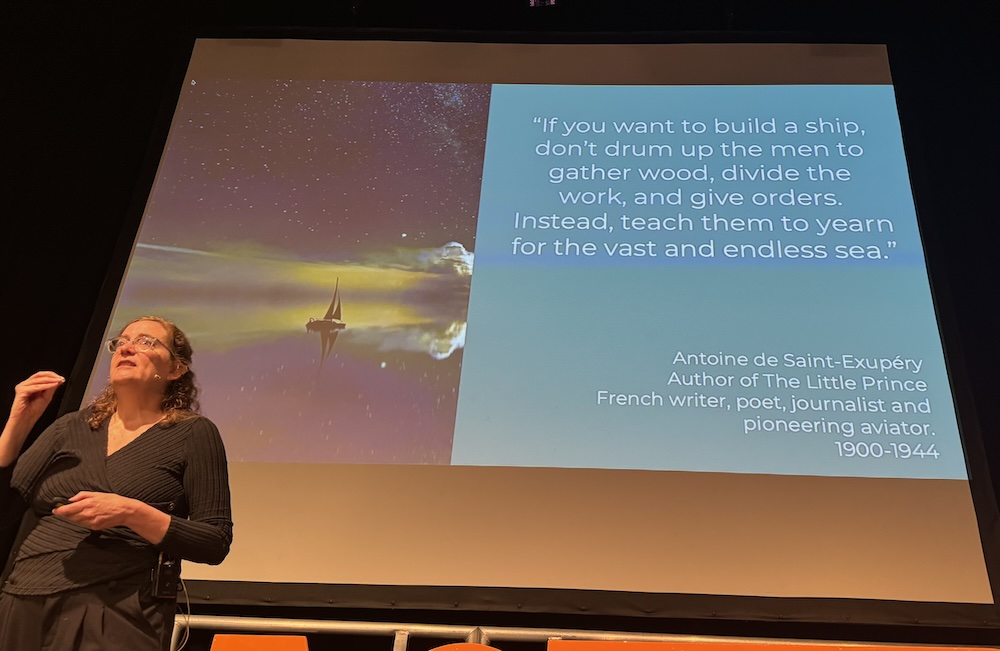
Janet gave plenty of examples about how visions work, be it from a Dutch company that was revolutionising the care sector, to how Airbnb used storyboards to Apple, who had a vision in the 1987 that included touch screens, voice commands and video conferencing called the Knowledge Navigator. That’s not predicting the future, that’s a vision of building the future.
I also liked the Facebook product metric:
Get to 10 friends in 7 days
Simples. And it drove everything at Facebook. Well, before the enshittification set in anyway.
Storytelling again, eh?
Janet’s talk was rather inspirational, as it builds on that basic human building block, the story, to show how that can drive the biggest endeavours. As it was an agile conference, it is only fitting to finish with a quote from some Japanese car-manufacturer types - no, not Toyota this time:
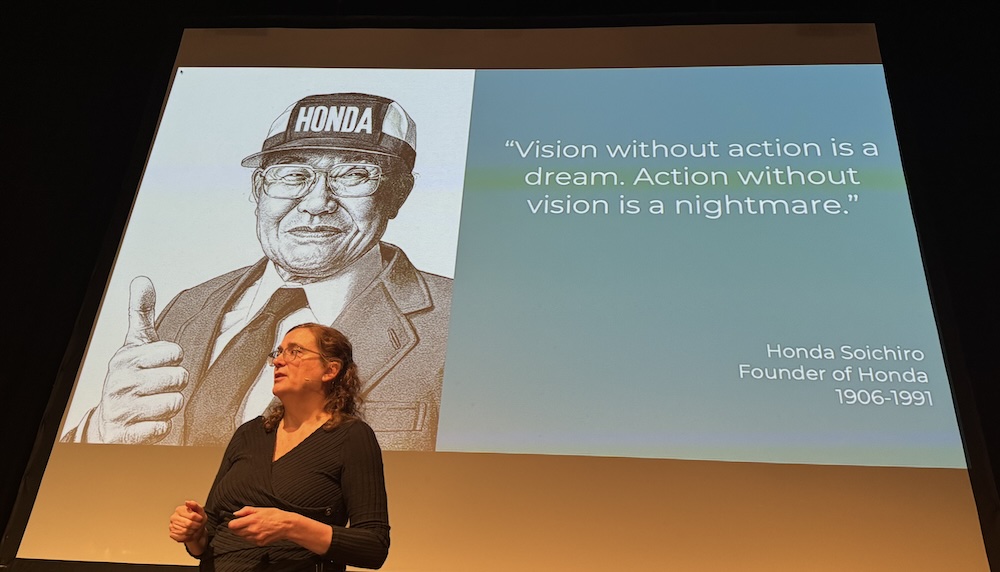
Postscript
There was way more at Agile on the Beach! I didn’t mention the workshops, the beach party or the boat party and missed out several excellent talks. It’s a fab conference and I can only recommend it to anyone!
Tags agile aotb conferenceIf you'd like to find more of my writing, why not follow me on Bluesky or Mastodon?